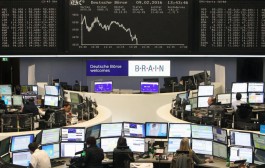Oil prices rose close to the highest level in a month after US inventories fell more than expected, while China revealed additional stimulus.
West Texas Intermediate crude rose above $75 a barrel after reaching its highest level since December 26 in trading on Wednesday, while Brent crude remained above $80. US inventories fell by more than 9 million barrels last week, six times more than expected, reaching their lowest level since October.
In China, the government said it would reduce banks' reserve requirement ratio within two weeks and signaled that more support measures may follow, supporting the energy consumption outlook in the largest crude oil importer.
Oil is struggling to break out of a tight trading range this month, with geopolitical tensions in the Red Sea roiling global trade, offset by concerns that crude supply growth will remain strong from non-OPEC producers. In a reminder of the growing risks in the Middle East, the US Navy intercepted attacks on two container ships launched by Iran-backed Houthi rebels in Yemen.
Charu Chanana, market strategist at Saxo Capital Markets, said: “The EIA inventory decline may be an exception resulting from the abnormally cold weather in the recent period, which affected production.”
He added that non-OPEC supplies continue to offset concerns in the Middle East, suggesting that oil may be in a limited range until there is greater clarity on the outlook for global growth.
The spot spread for WTI - the difference between its two nearest contracts - widened to 12 cents per barrel in backorder, compared to 7 cents in opposite contango two weeks ago.







































